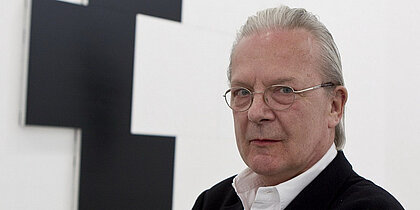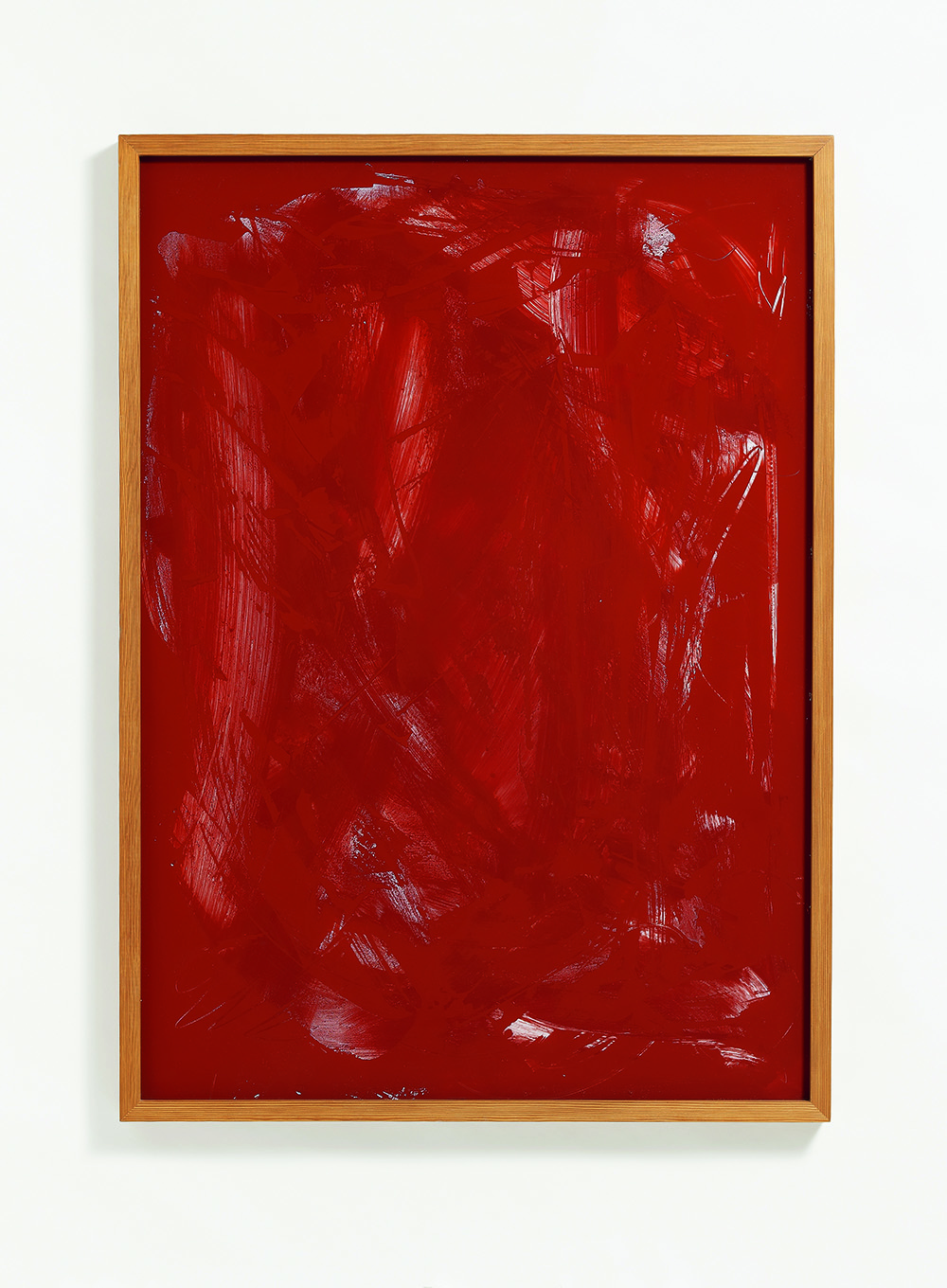Germany
Imi Knoebel


Biography
Imi Knoebel est né Klaus Wolf Knoebel à Dessau (Allemagne) en 1940. De 1962 à 1964, il étudie le design structurel et la composition constructive à la Werkkunstschule de Darmstadt, selon les théories des fondateurs du Bauhaus Johannes Itten et László Moholy-Nagy. Il doit son surnom « Imi » à son ami et camarade Rainer Giese ; ensemble, ils forment le duo Imi & Imi, c’est-à-dire « Ich mit Ihm » (« Moi et lui »).
De 1964 à 1971, ils étudient ensemble à la Kunstakademie de Düsseldorf avec Blinky Palermo, sous la direction de Joseph Beuys. Imi Knoebel participe aux Documenta de Kassel de 1972, 1977, 1982 et 1987. En 1996, le Haus der Kunst de Munich lui consacre une vaste rétrospective itinérante. En 2009, une autre rétrospective a lieu à la Gare de Hambourg et à la Neue Nationalgalerie de Berlin. En 2018, Imi Knoebel a présenté une exposition personnelle de grande envergure au Museum Haus Konstruktiv à Zurich.

About the artworks
Imi Knoebel est l’un des artistes essentiels de sa génération. Son œuvre aux nombreuses facettes s’étend sur plus de 50 ans de dessins, peintures, sculptures, photographies, projections et installations. Très tôt, il adopte une position réductionniste fondée sur les lignes pures, les projections de lumière et les images blanches. En 1968, il projette de la lumière dans des pièces vides et documente ces projections avec des photographies : il est alors parmi les premiers à utiliser la photographie comme médium artistique. L’influence du Bauhaus se fait plus sensible par la suite, notamment dans son utilisation de la géométrie et de la couleur. À partir de 1974, il expérimente la peinture antirouille industrielle, qu’il applique en brillantes et expressives combinaisons colorées sur des plaques de métal ou de contreplaqué. Les panneaux sont ensuite disposés en relation spatiale les uns avec les autres, formant d’immenses sculptures interrogeant les relations entre l’espace, la surface et la couleur. Quand son ami le célèbre artiste Blinky Palermo meurt en 1977, Imi Knoebel lui rend hommage avec sa série 24 colours for Blinky. Il cessera ensuite d’utiliser le noir et blanc, pour se consacrer exclusivement à la couleur.
Ses toiles sont à la fois expressionnistes et formalistes, mettant en question les effets du matériau et de la couleur. Knoebel rejette toute idée de spiritualité. En 1988, Imi Knoebel réalise l’œuvre d’art sociale Kinderstern, et crée la fondation du même nom, qui lutte aujourd’hui encore pour les droits des enfants. Les étoiles produites sont vendues au profit d’enfants nécessiteux, Knoebel se montrant ici fidèle à l’enseignement de Joseph Beuys selon lequel l’art doit changer la société. Geste éminemment symbolique de la part d’un artiste allemand, Knoebel dessine en 2011 des vitraux pour la cathédrale de Reims, qui voisinent ceux commandés à Marc Chagall en 1974.
The artworks
03
ALLE VIER, 1998
Acrylique sur tubes carrés en aluminium
102.5 x 102.5 x 8.6 cm
ALLE VIER, 1998
Acrylique sur tubes carrés en aluminium
102.5 x 102.5 x 8.6 cm

OHNE TITEL, 1990
Acrylique sur plexiglas
100 x 72 cm
OHNE TITEL, 1990
Acrylique sur plexiglas
100 x 72 cm

OHNE TITEL, 1994
Acrylique sur plexiglas
90 x 66 cm
OHNE TITEL, 1994
Acrylique sur plexiglas
90 x 66 cm